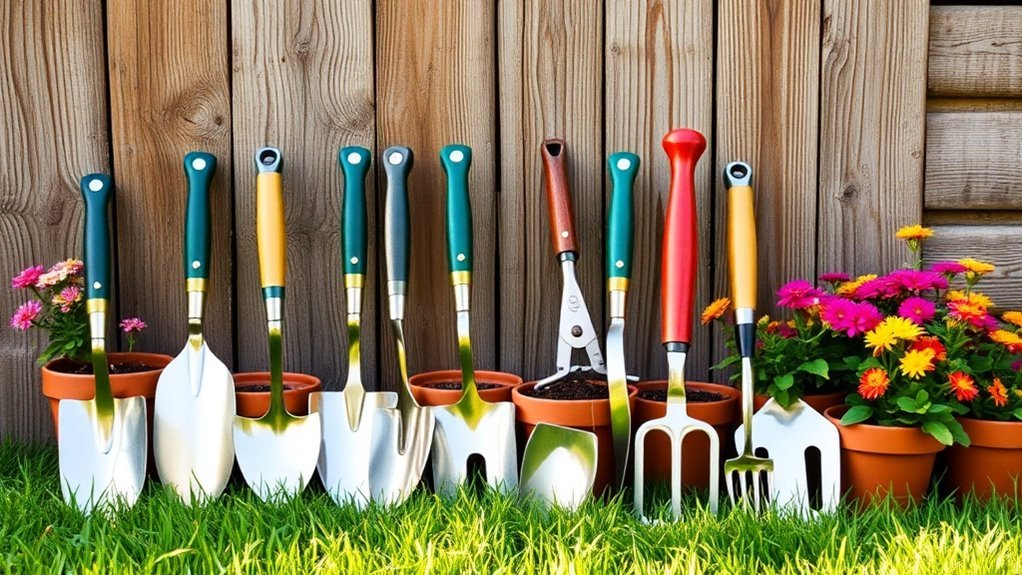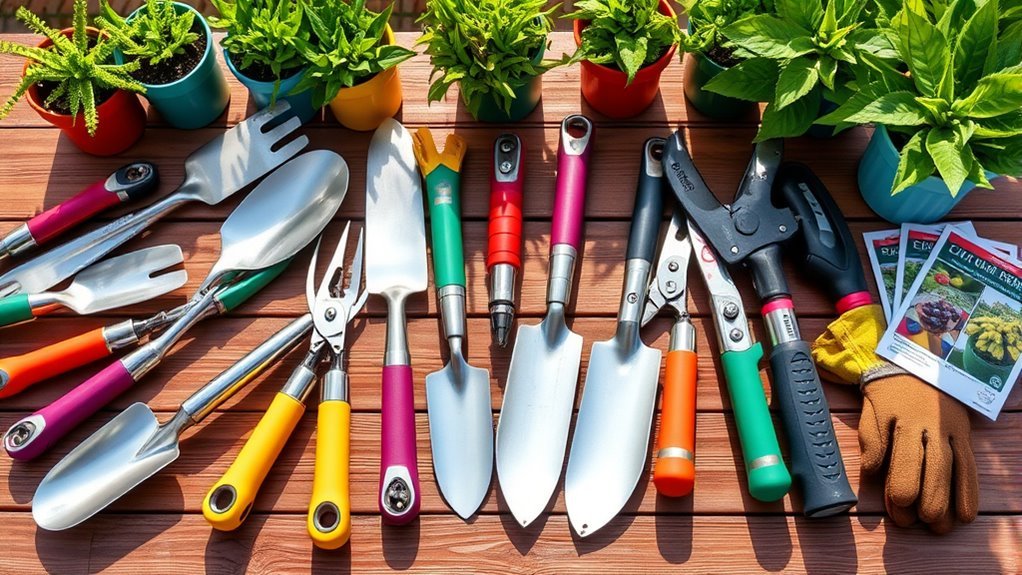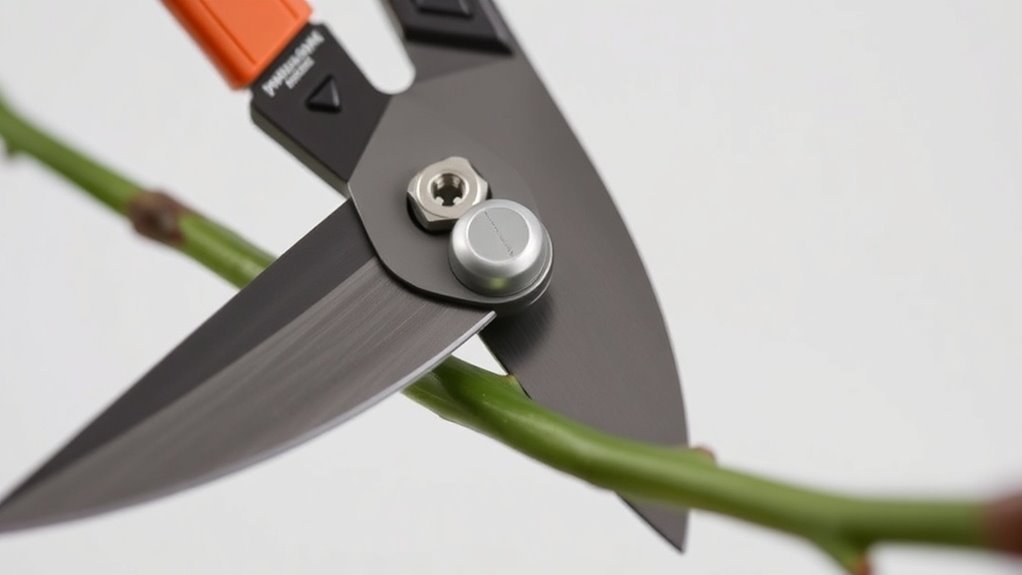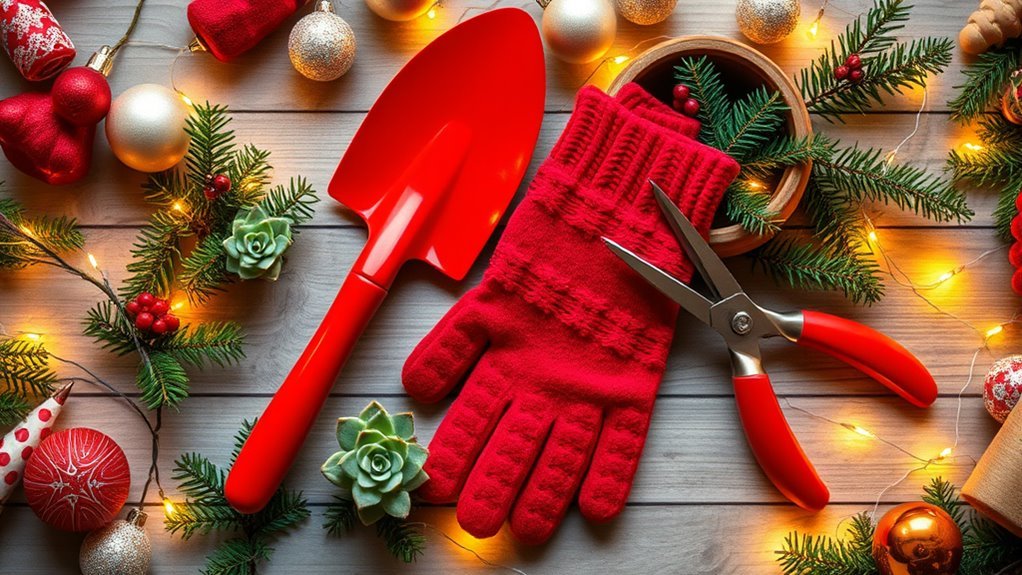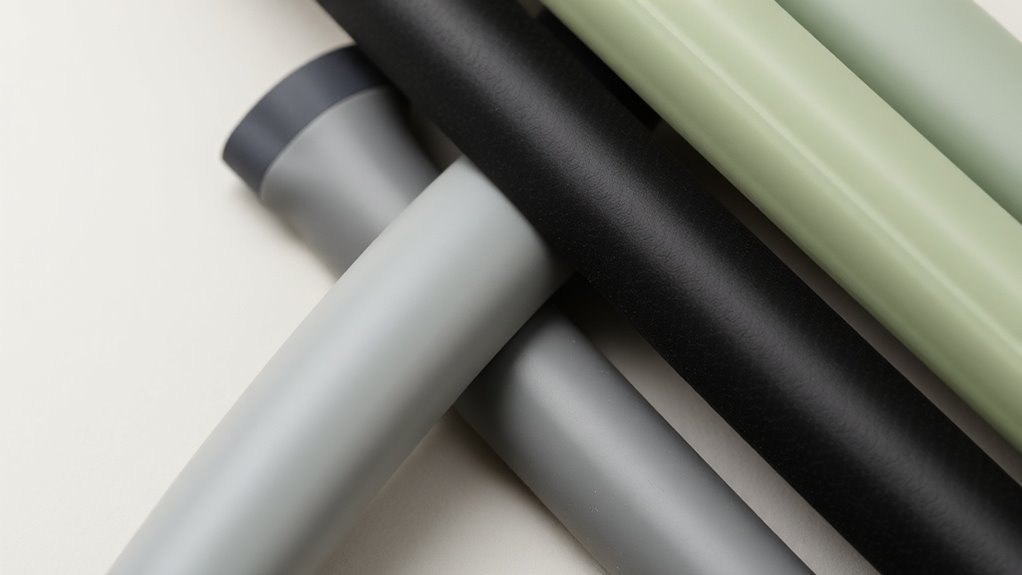Sharpening Garden Tools for Long Life
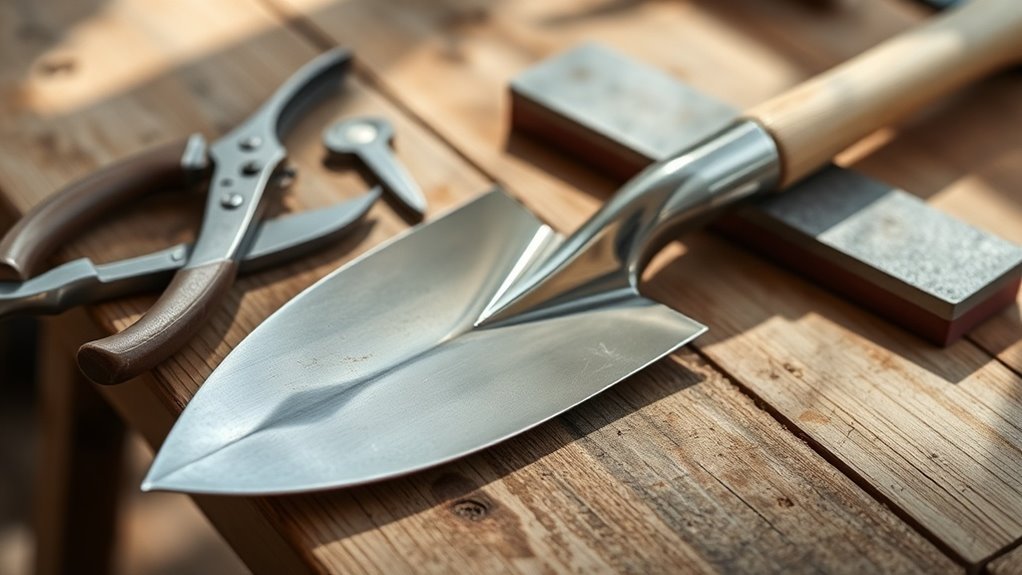
To guarantee your garden tools last long and perform effectively, keep them sharp. Sharp tools make clean cuts, reducing strain on your hands and minimizing plant damage. Check for dullness if you notice jagged cuts or increased effort while using them. Use a whetstone, sharpening steel, or electric sharpeners for maintenance. Remember to clean and inspect tools regularly. Interested in tips for maintaining your tools and avoiding common mistakes? There’s more to discover!
Key Takeaways
- Regularly sharpen tools at a 20-degree angle to maintain optimal cutting efficiency and extend tool lifespan.
- Clean tools immediately after use and ensure they are thoroughly dried to prevent rust and corrosion.
- Use quality sharpening equipment like whetstones or electric sharpeners to achieve consistent, precise edges.
- Inspect tools routinely for damage or dullness to catch issues early and maintain performance.
- Store tools in a dry, well-ventilated area to minimize wear and extend their longevity.
The Importance of Sharp Tools in Gardening
When it comes to gardening, sharp tools can make all the difference. Using tools that are properly sharpened means you can cut through plants and soil more efficiently, helping you save time and energy.
Dull blades struggle, often leading to jagged cuts that can harm plants and increase the risk of disease. A sharp hoe, for instance, glides effortlessly through tough soil, while scissors snip seamlessly through stems, promoting healthier growth.
Additionally, sharp tools reduce the physical strain on your body, making gardening a more enjoyable experience. Keeping your tools sharp not only enhances your performance but also extends the life of the tools themselves.
Sharp tools ease physical strain, enhance gardening performance, and prolong the life of your equipment.
In short, investing time in sharpening can lead to a more productive and rewarding gardening journey.
Identifying Which Tools Need Sharpening
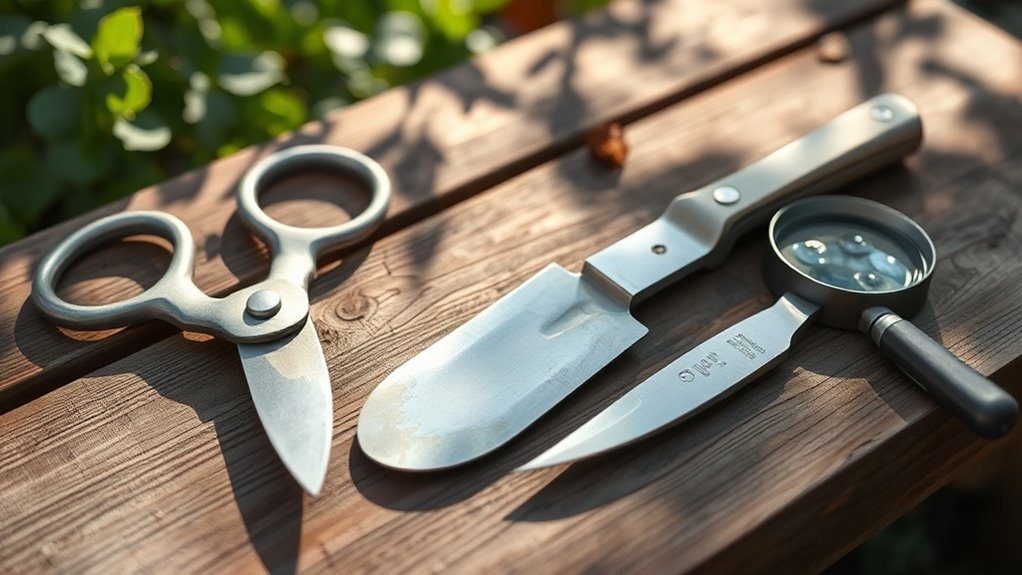
To keep your garden tools in top shape, it’s essential to know which ones need sharpening.
Start by observing their cutting performance and checking the condition of the blades.
Also, inspecting the tool edges can give you clear signs of wear and tear that need attention. Additionally, exposure to harsh weather conditions can accelerate the need for sharpening, so be mindful of how weather affects your tools.
Observe Cutting Performance
As you work in your garden, it’s essential to pay attention to how your cutting tools perform. Noticing changes in their cutting abilities can help you identify which tools need sharpening.
Here are some signs to watch for:
- Difficulty cutting through plants that were once easy to slice.
- Jagged edges on the cut stems, instead of clean cuts.
- Increased effort required when using the tool, leading to hand fatigue.
- A need for multiple passes to achieve a clean cut, instead of a single smooth motion.
Check Blade Condition
Although you might notice a decline in your cutting tools’ performance, the condition of their blades is essential in determining whether they need sharpening.
Start by visually inspecting each blade for signs of damage, such as chips, nicks, or rust. Run your fingers along the edge; it should feel smooth, not jagged or dull. If you can’t achieve clean cuts through your garden materials, it’s likely time to assess the blade’s health.
Additionally, consider how often you use each tool; frequent use may require more regular checks. Don’t forget to keep your tools clean and stored properly to prevent deterioration.
Inspect Tool Edges
After checking the blade condition, it’s time to closely inspect the tool edges to determine which ones require sharpening.
You might notice that some edges are dull, which can make your tasks more challenging. Look for these signs:
- Bumps or Chips: If you spot any imperfections on the edge, sharpening is needed.
- Unevenness: An edge that’s not uniformly sharp will struggle with clean cuts.
- Reflective Surface: A shiny edge means it’s become too smooth and needs work.
- Poor Performance: If you’re exerting more effort while cutting, it’s a clear sign those edges need attention.
Regularly inspecting your tools not only enhances your gardening experience but also prolongs the life of your tools.
Essential Sharpening Tools and Equipment

Keeping your garden tools in top shape requires the right sharpening tools and equipment. Start by investing in a quality whetstone, as it’s versatile for various blade types.
Invest in a quality whetstone to keep your garden tools sharp and versatile for all blade types.
A sharpening steel can help maintain edges, while a honing guide guarantees consistent angles for precision. If you prefer power tools, consider an electric sharpener designed for garden equipment.
Don’t forget safety goggles and gloves to protect yourself during the sharpening process. Additionally, a wire brush is handy for cleaning away debris and rust before you sharpen.
Finally, a cloth or lubricant will keep your tools from binding. With these essential items in your toolkit, you’ll be well-equipped to maintain your garden tools and guarantee they last longer. Regular maintenance, including cleaning tools after each use, is crucial for maximizing the lifespan of your equipment.
Step-by-Step Guide to Sharpening Blades
Now that you’ve got the right sharpening tools at your disposal, it’s time to sharpen those blades. Follow these steps to guarantee your tools can work effectively for years:
- Secure the blade: Clamp it down or hold it firmly for stability.
- Choose your angle: Aim for a 20-degree angle for most garden tools.
- Use the sharpening tool: Glide the tool along the blade’s edge, maintaining that angle.
- Check your progress: Regularly inspect the blade for sharpness by carefully feeling the edge.
Remember to take your time and enjoy the process. A bit of patience now will reward you with well-maintained blades, making gardening tasks smoother and more efficient.
Happy sharpening!
Tips for Maintaining Your Garden Tools
Keeping your garden tools in top shape starts with regular cleaning practices. You’ll want to store them properly to prevent rust and damage, and routine inspections can help catch small issues before they become bigger problems. Additionally, maintaining the sharpness of your tools improves their effectiveness in tasks such as mixing in organic matter and encourages healthier soil for plant growth. Let’s explore some essential tips to keep your tools lasting longer and performing better.
Regular Cleaning Practices
Many gardeners overlook the importance of regular cleaning practices for their tools, yet it’s crucial for maintaining their effectiveness and longevity.
By keeping your garden tools clean, you prevent rust, guarantee smooth operation, and prolong their life.
Here are some easy cleaning tips you can follow:
- Scrub off soil: Use a stiff brush or old toothbrush to remove dirt after each use.
- Wash with soap and water: For deeper cleans, use warm soapy water and a sponge.
- Dry thoroughly: Always dry your tools completely to prevent rust.
- Apply oil: A light coat of vegetable or mineral oil can help protect metal surfaces.
Proper Storage Techniques
Proper storage techniques play an essential role in maintaining the longevity and functionality of your garden tools.
When you’re done using them, it’s important to clean off any dirt and moisture to prevent rust and corrosion. Store your tools in a dry, well-ventilated area, like a shed or garage, away from extremes of temperature.
Hang tools on a wall or use pegboards to keep them off the ground and easily accessible. For smaller tools, consider using labeled storage bins to keep everything organized.
Avoid overcrowding, as this can lead to damage. By following these tips, your tools will stay in top shape, ready for the next gardening season.
Just remember that effective storage sets the stage for great tool performance.
Routine Inspection Tips
Even with the best storage practices, tools still need regular checks to guarantee they’re in good condition.
Make it a habit to inspect your garden tools at least once a season. This simple routine can save you time and effort in the long run.
- Check for Rust: Look for any signs of rust, especially on metal parts, and treat them promptly.
- Tighten Loose Screws: Make sure all screws and bolts are tightened to keep tools functioning properly.
- Inspect Handles: Check for cracks or splinters in wooden handles; a safer grip means less chance of injury.
- Clean Regularly: After each use, clean off dirt and debris to maintain tool quality and performance.
With these tips, your tools will be ready when you are!
Common Mistakes to Avoid When Sharpening
When sharpening your garden tools, you might unknowingly commit common mistakes that can hinder their performance.
One major error is using the wrong sharpening technique; each tool has specific angles that need to be maintained. Ignoring this can result in ineffective blades.
Another mistake is oversharpening; you don’t want to remove too much metal, which can weaken the tool’s structure.
Failing to clean the tools prior to sharpening can also diminish effectiveness, as dirt and grime can dull your efforts.
Additionally, neglecting to use proper safety gear like gloves and goggles is risky.
Finally, don’t forget to check for damage after sharpening; a sharp tool won’t perform well if it’s also broken.
Avoid these pitfalls to keep your tools in top shape!
When to Seek Professional Help for Tool Sharpening
Knowing when to seek professional help for tool sharpening can save you time and prevent frustration. It’s essential to recognize your limits and when your tools need expert care.
Recognizing when to seek professional tool sharpening can save time and enhance your gardening experience.
Here are some signs that it’s time to call in the pros:
- You’re unsure about the correct angle for sharpening.
- Your tools have significant nicks or damage that require special equipment.
- You simply don’t have the time or patience to do it yourself.
- You’ve tried sharpening, but the tools still aren’t performing well.
Don’t hesitate to seek professional help if you encounter these situations.
A well-maintained tool not only lasts longer but also enhances your gardening experience! Investing in professional sharpening might be just what your garden needs.
Questions
How Often Should I Sharpen My Garden Tools?
You should sharpen your garden tools at least once a season, but if you notice them becoming dull or less effective, don’t wait—sharpen them sooner to keep your gardening tasks easy and enjoyable.
Can I Use a Whetstone for All Garden Tools?
You can use a whetstone for many garden tools, but it’s not a one-size-fits-all solution. Just like a fine chef selects their knife, you should choose the right tool for each job.
What Safety Precautions Should I Take While Sharpening?
Always wear safety goggles to protect your eyes, secure your tools, and use gloves to prevent slips. Keep your workspace clear and guarantee proper lighting. Remember, staying safe is just as important as getting tools sharp.
Is It Necessary to Oil Tools After Sharpening?
Yes, you should oil tools after sharpening! It’s like giving them a luxurious spa treatment. Oiling protects against rust and keeps them functioning smoothly, ensuring they last longer and perform their best when you need them.
Can I Sharpen Tools With Household Items?
Yes, you can sharpen tools with household items. A flat stone, a file, or even a ceramic mug’s edge can do the trick. Just make certain you’re careful and maintain the proper angle while sharpening.
Conclusion
By keeping your garden tools sharp, you’re not only enhancing their performance but also prolonging their lifespan. Regular maintenance and proper sharpening techniques can save you time and effort while gardening. Have you ever considered how much easier your tasks could be with just a little care? Remember, investing a few minutes in your tools now can lead to healthier plants and a thriving garden in the long run. So, grab those sharpening tools and get started!

